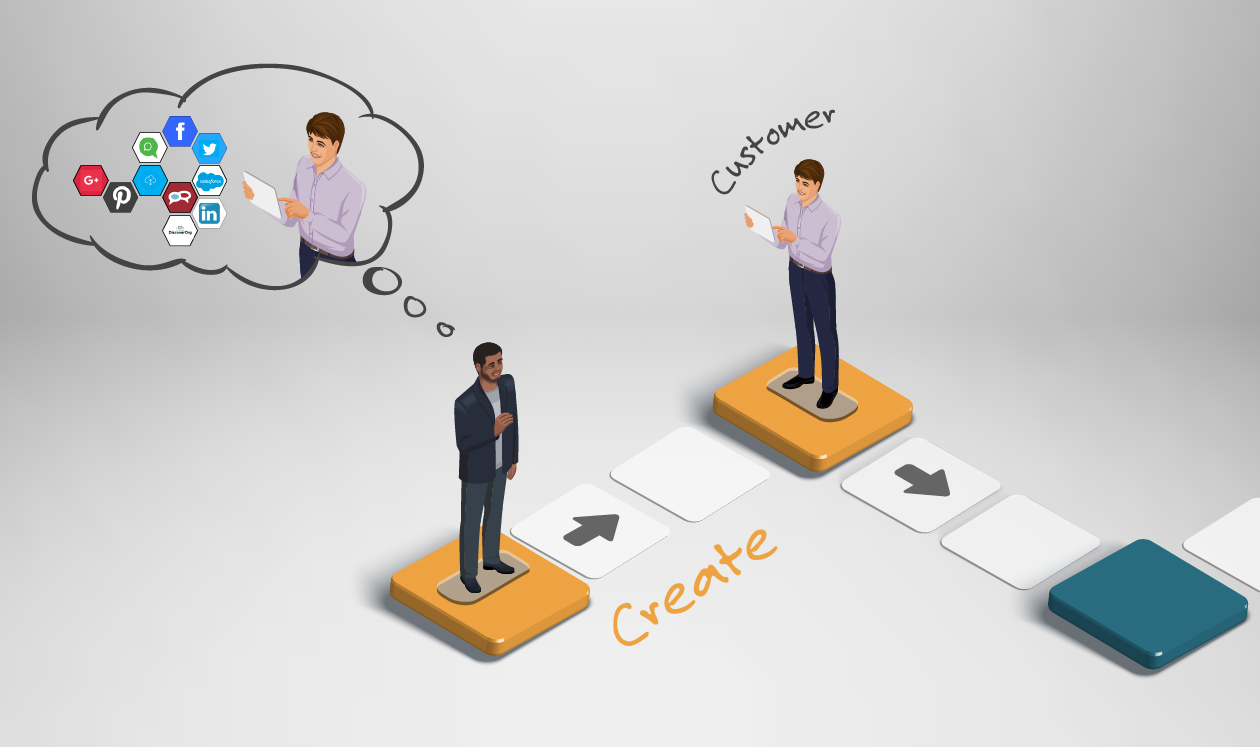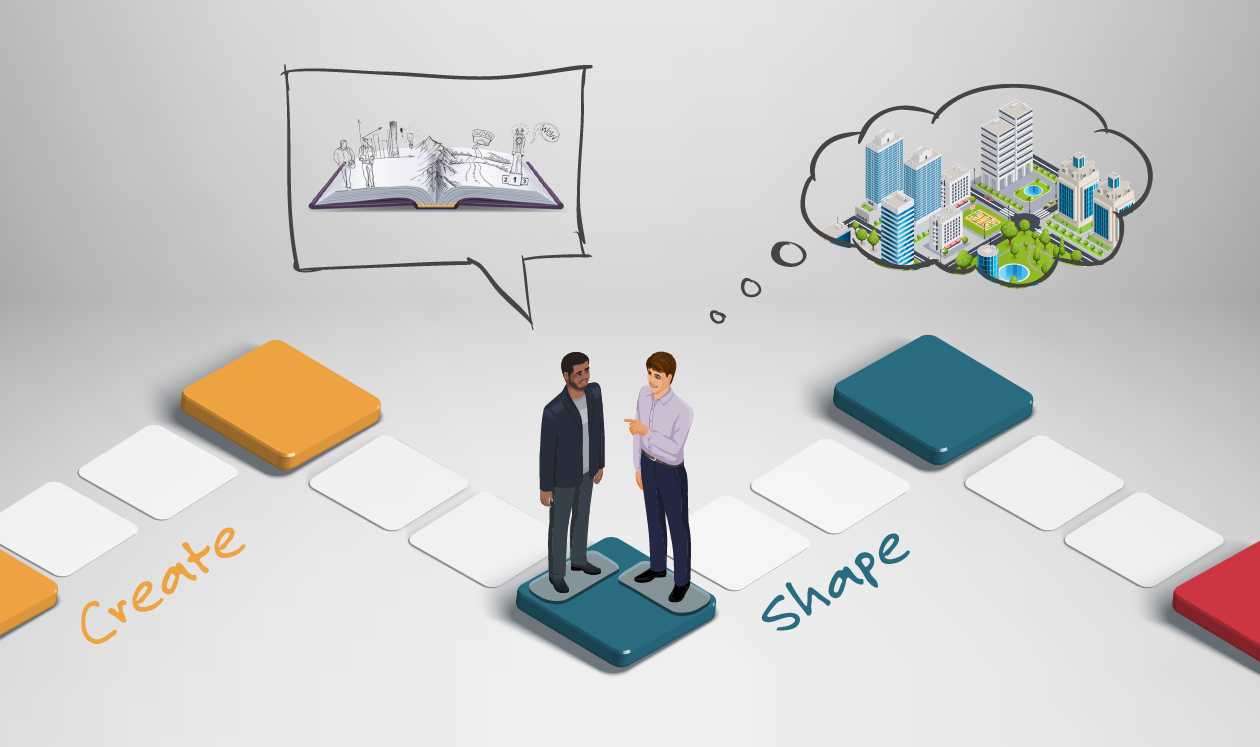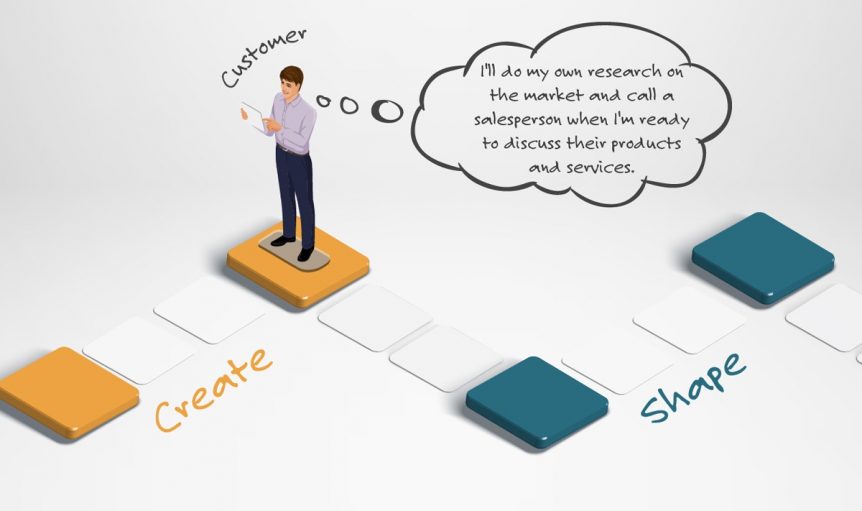If you embark on a sales career today, you may quickly find out that your prospects are not as excited to speak with you as you are with them. Today’s B2B buyers have access to an endless supply of information about your company without ever having to engage you directly. These same buyers have also cited a reticence to engage with salespeople in the “awareness” or “investigate” phases that take place early in the buying process, because they rarely find value in those early-stage conversations with sellers. So what’s the best approach to driving business with B2B buyers? If you think it’s waiting to engage with buyers later on, think again.
Buyers won’t engage with you unless they feel that you can share insights that will add value to their process beyond what they could find on their own. The problem with sitting on the sidelines until they’re ready for you is that they may never be ready, or you’ll have such a small window of opportunity that you won’t be able to influence their approach. According to Gartner, B2B buyers now only spend about 17% of their buying journey speaking with suppliers, so time is of the essence.
Since sitting on the sidelines isn’t an option, what can you do? Here are two early-stage selling techniques that will help you get into the process sooner and add more value.
Research your buyers to form a strategy

If customers are doing their own research to form opinions, consensus, and make decisions, why can’t a salesperson do the same? The amount of data available to today’s b2b sellers is endless.
You may be an experienced rep, have an encyclopedic knowledge of your product, and know how to relate product functionality to business issues, but even those skills won’t get you anywhere if the buyer doesn’t hear you talking about their business from their perspective. In short, don’t expect many successful early-stage interactions if you don’t do your homework.
Sellers need to have deep knowledge about their buyer, the company’s strategy, competition in the account, key industry trends, regulatory issues, etc. There are a million sources of information, and where you get it is dependent upon the type of company that you’re trying to sell. Here are a few of the more common sources:
- Internal knowledge about the prospect and competitors
- LinkedIn, ZoomInfo, InsideView, etc.
- Glassdoor, Yelp Reviews, etc.
- Company website, investor relations, and social media
- Information gathering conversations with employees in the target company or former employees of the target company, or people in other organizations that partner with the target company, etc.
- Industry publications
- Google searches
The amount of data gathering can vary from a few hours each month, to a fifteen-minute conversation or search that helps you find out what matters to the people and companies you are pursuing. Once you have found the information you need, the key is to frame your messaging around the customer’s business and what you can bring to the conversation that will pique their interest (Tip: It’s not about your products or services).
However, your job isn’t done after gaining access to have a conversation. The next step is even more important, but completely dependent on this one.
Stimulate your customer’s thinking through Conversational Sales

That data you’ve gathered –particularly information from colleagues or experienced yourself–is the best way to engage in meaningful interactions with buyers in early-stage selling situations.
A great way to engage buyers early is through effective storytelling. Stories are learned experiences–either your own or from your colleagues–that demonstrate your bona fide in the space: either positive experiences that show how working with you helped similar clients avoid common business hurdles, or even negative ones that demonstrate how you’ve worked with clients to overcome hurdles they couldn’t avoid. Either way, the important attribute of storytelling is not how cool your product is, but rather the business value your buyer is able to achieve by working with you. Storytelling during early-stage interactions is a great way to earn the right to enter the buying process in a meaningful way sooner than your competitors.
Chatting with colleagues about experiences they’ve had with your prospect’s competitors can help you tell stories that resonate with your buyers. Finding research using LinkedIn Sales Navigator (for example) can make you smarter about who your buyers are, what they care about, the words they use, important events that might have an impact on the company, etc.; all so that you can “speak like a native” when you engage with them.
Similarly, a point of view–particularly when paired with effective storytelling–shows value that often changes the way your buyer thinks about solving their key business problems. You can combine your learned experiences with the additional research you’ve done to establish points of view that lend new insights to your buyer.
Points of view can range from “positional”—there’s a right and wrong way to approach your challenge—vs. “perspective”, where you share how your company’s recommended approach to a business challenge but also recognize there are other ways to think about the topic. When a point of view is used effectively, buyers will appreciate the insight it brings, which is business value they might not see from other reps in their enterprise selling efforts.
However, before you share anything, you must be situationally aware of what is important to the buyer and the company’s strategy. Sellers should focus on ways to learn key information from the buyer that will enable them to share insights that are custom-tailored to their needs. There is no one-size-fits-all approach to every sales interaction; in fact, every interaction requires the right combination of learning and sharing, so you need the flexibility to do either, depending on what’s called for in each sales interaction.
Also, keep in mind that very few sales cycles involve one buyer; you have to be prepared to engage in early-stage selling efforts with multiple stakeholders. Just remember that one contact’s insight may be less meaningful to a different contact. As a result, you should be prepared to vary your approach from one conversation to another.
Using an approach with the right combination learning and sharing with right stakeholders will enable you to be effective in early-stage selling because:
- You build credibility by understanding their business
- You bring insight to the conversation through customer stories and points of view
- They can envision working with you to solve their business challenges
When this approach is applied to early-stage customer conversations, salespeople are able to identify and pursue the most promising sales opportunities. This result—critical to the selling process—demonstrates the value of this approach in early-stage selling.

